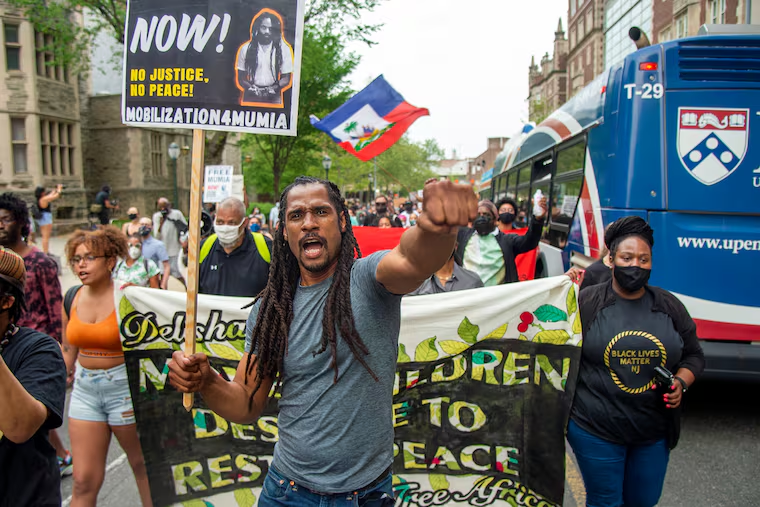Penn Museum pledges to return remains of MOVE member to the Africa family, demonstrators visit residence of Penn President Amy Gutmann
A university spokesperson said the remains “are accounted for,” but would not say where they are.

The director of the Penn Museum said Wednesday that he had contacted members of MOVE to arrange the return of bone fragments belonging to one of the group’s members who died in the 1985 bombing of their West Philadelphia home.
In a statement, Christopher Woods said he has plans to meet with the family in the coming days to discuss the return of the remains, though no formal plans have been announced. Woods also called the decision to use the bones in an anthropology course a “serious error in judgment” by an adjunct professor.
MOVE spokesperson Janine Africa confirmed that Woods had spoken with the group late Tuesday, and said its members are open to sitting down with him to discuss the issue.
“Right now we are so angry and hurt that we haven’t been talking about this to anybody,” Africa said. “We don’t know how we’ll be feeling and what will come out of this until we sit down and talk.”
A university spokesperson said the remains “are accounted for,” but would not say where they are.
» READ MORE: Controversy flares over how Penn and Princeton treated a MOVE bombing victim’s remains
Woods, in a statement Wednesday, apologized to the Africa family for the behavior of Janet Monge, an adjunct professor whose course, “Real Bones: Adventures in Forensic Anthropology,” used the MOVE bombing and the ensuing conflagration as a “case study.” During her class, Monge showed the bone fragments — a portion of a femur and pelvis — to her students in videos that were available online, but have since been removed by the university.
She did not return a request for comment Wednesday.
“Classes in forensic science require human remains to teach the next generation of forensic specialists,” Woods said. “However, it is an ethical imperative to show the utmost respect to family survivors.
“Regretfully, this did not happen in this case — and it was a serious error in judgment to use these remains in a class of any kind, especially given the extreme emotional distress in our community surrounding the 1985 bombing of the MOVE house.”
The ill feelings the event has engendered continued Wednesday evening with a demonstration across the street from the Penn Museum that grew to several hundred people who decried the handling of remains.
“We want these [expletive] to be held accountable,” said MOVE member Mike Africa Jr., one of the speakers.
Others called for the museum to be burned down.
Some carried signs demanding the return of the remains.
“MOVE children deserve to rest In peace,” one banner said.
City Councilmember Jamie Gauthier also took part, telling the crowd: “Saying it won’t happen again is not enough.”
From the museum, the crowd marched to the university residence of Penn President Amy Gutmann, many of them chanting: “Hey Hey, Ho Ho, Bone Collecting has got to go.”
The closed front gate was guarded by police but the officers stepped aside when the protesters arrived.
No one from inside the mansion came outside, and the marchers sat in the middle of the street and listened attentively to the speakers.
The bone fragments came to Penn through a circuitous route that originated with Alan Mann, a forensic anthropologist who was hired to study the remains by a city commission investigating the bombing on Osage Avenue, which killed 11 people.
» READ MORE: Penn Museum apologizes for keeping remains of MOVE victim rather than returning them to family
Mann was unable to identify the remains, and they were in Penn’s custody until 2001, when Mann took them with him to a new position at Princeton University. The remains were returned to Penn in 2016, where Mann said he last saw them.
The university’s possession of the bones — which members of MOVE believe belong to Katricia Dotson, who was also called Tree Africa and was one of the bombing’s youngest victims — came to light last week when Inquirer freelancer and activist Abdul-Aliy Muhammad penned an opinion piece about the controversy.
Staff writer Robert Moran contributed to this article.